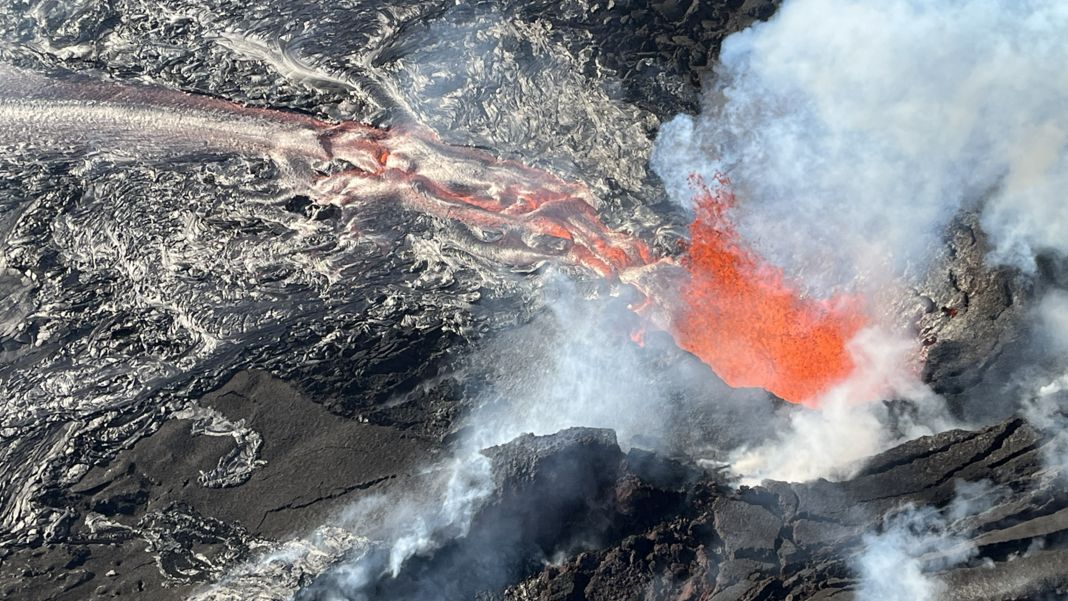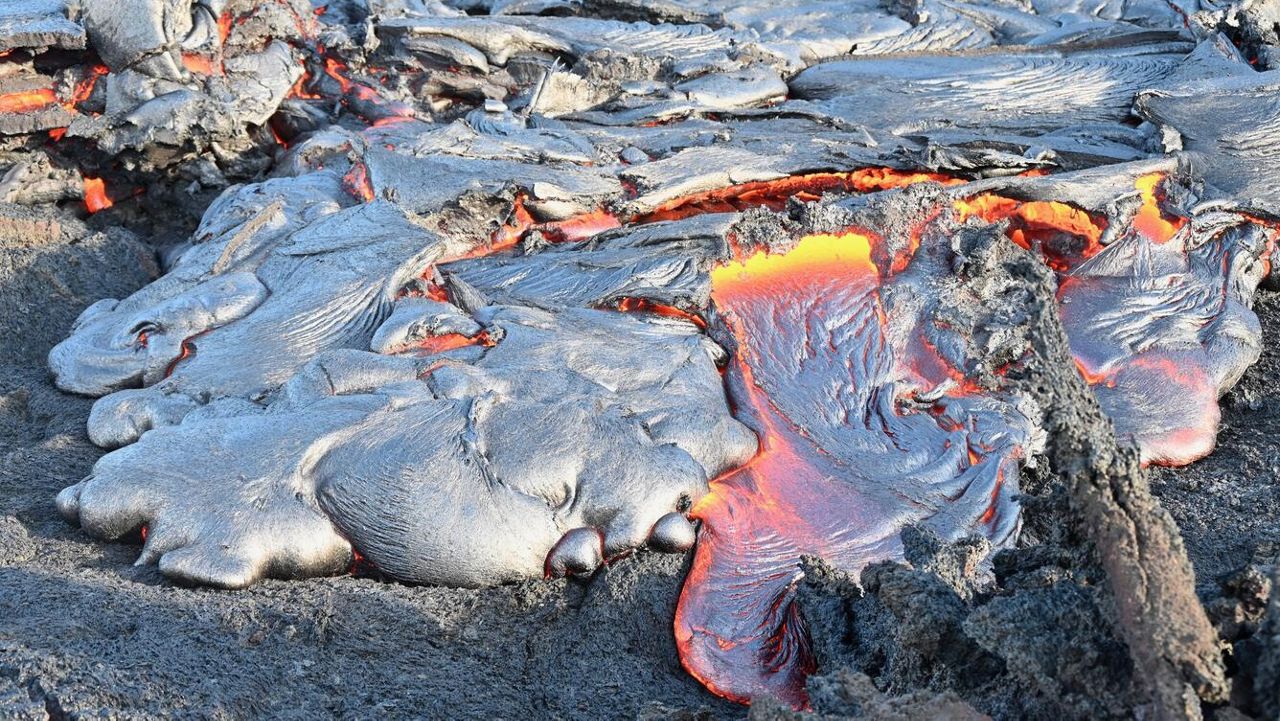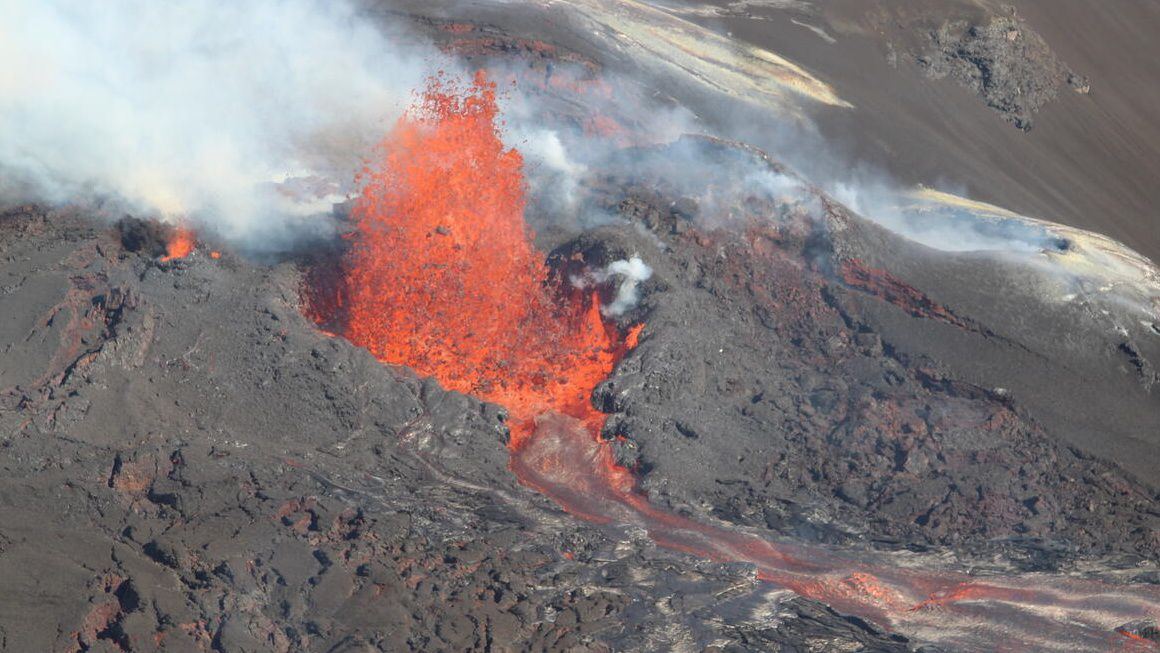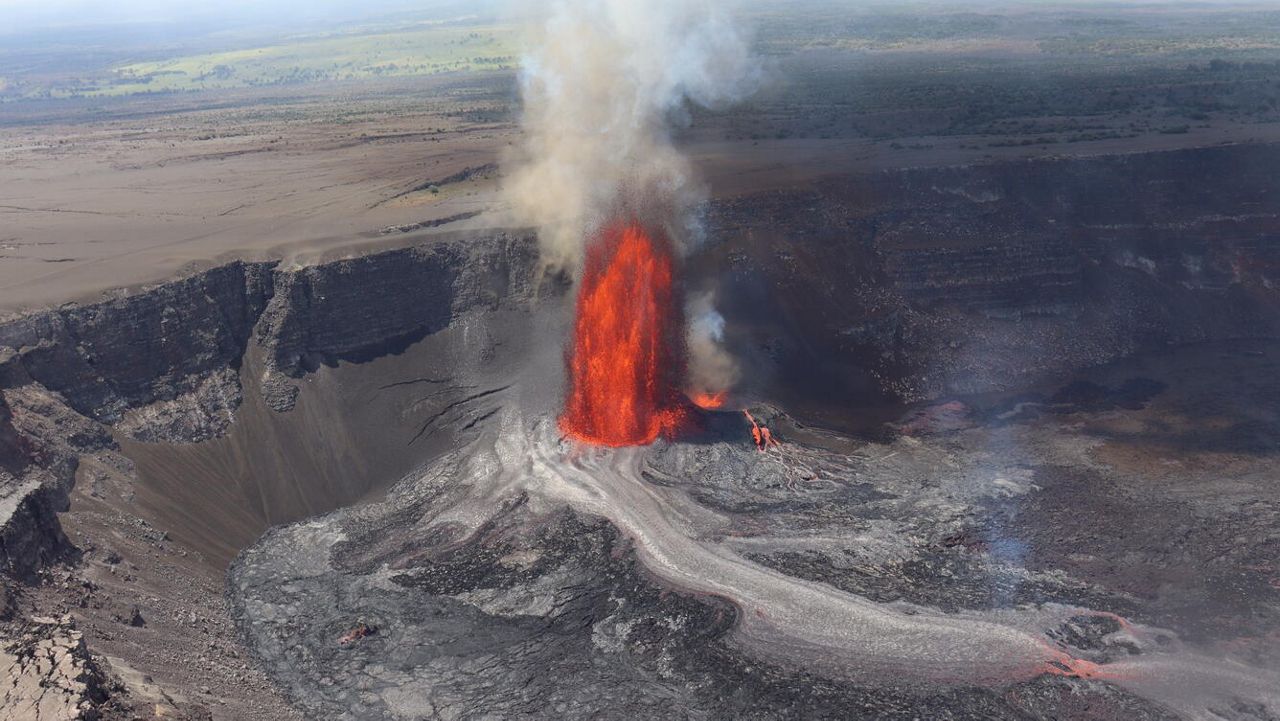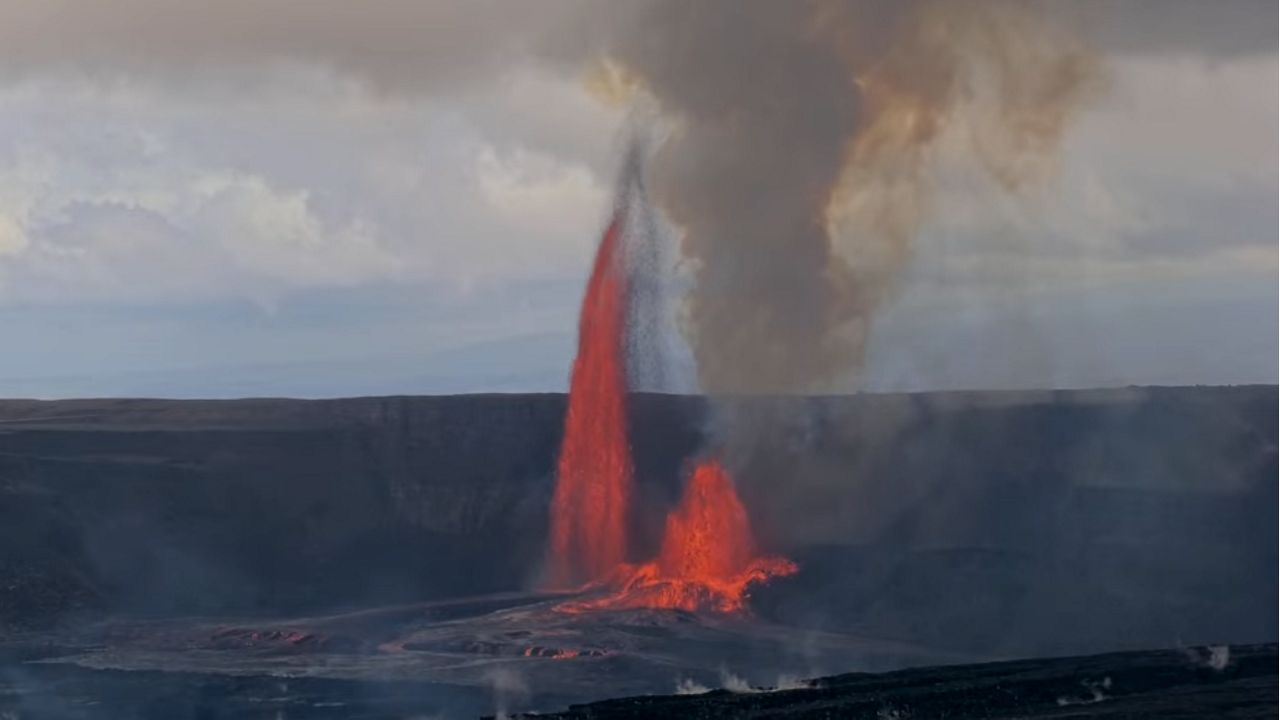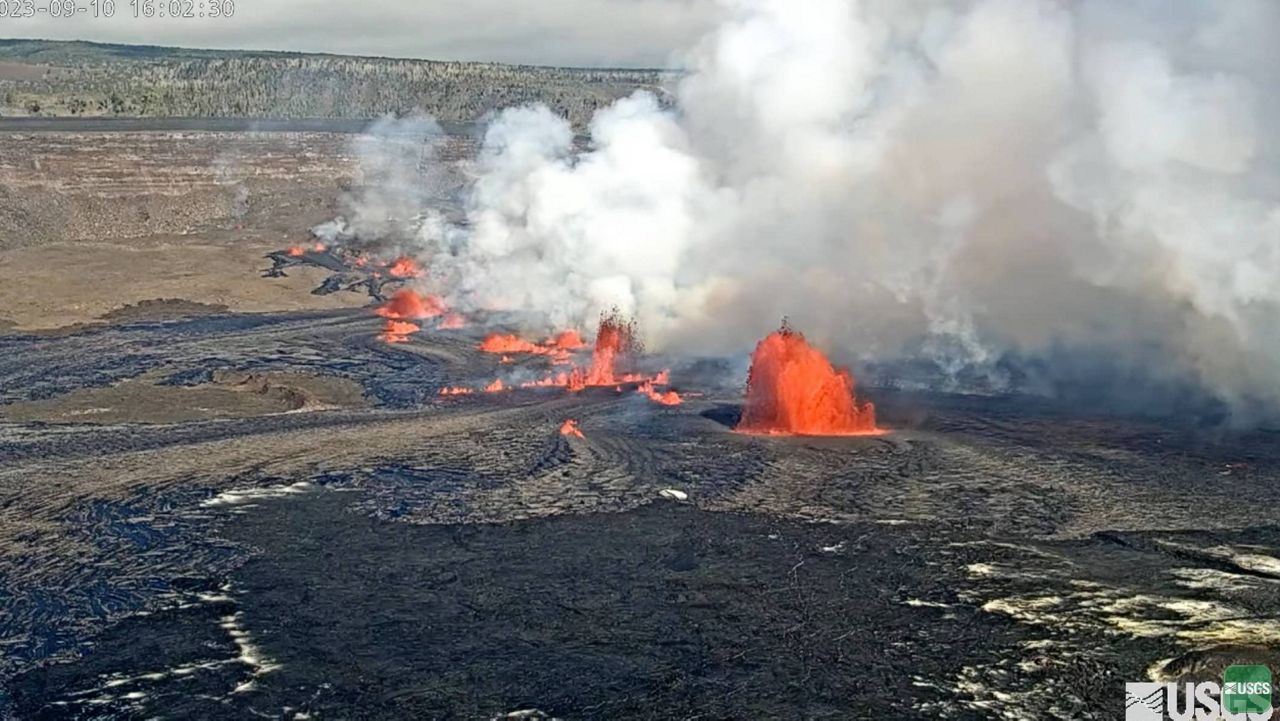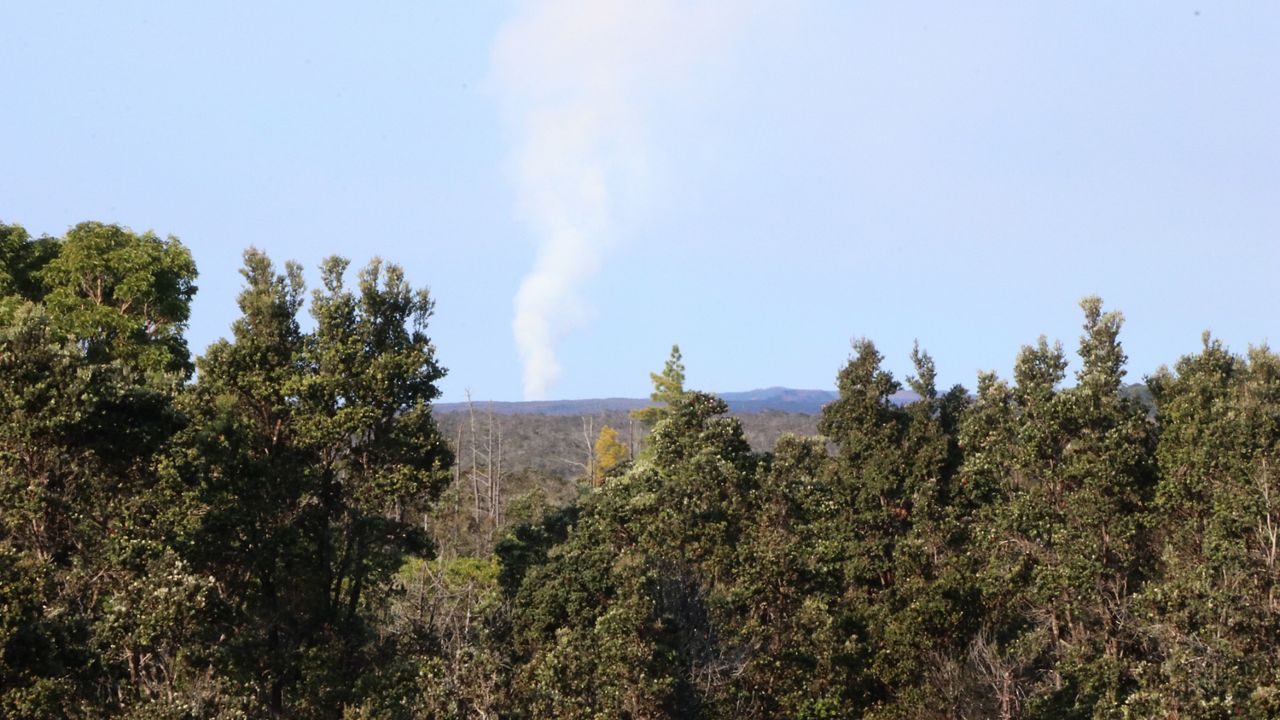The Hawaiian Volcano Observatory reported Kilauea volcano began its 18th episode on Wednesday at 10:01 p.m., before pausing later that night. On Sunday, the episode resumed again with lava flows, but paused later that day. Then, on Tuesday morning, the episode ramped up with lava overflows that preceded lava fountains, which reached over 650 feet high. But after about 10 hours of foutaning, episode 18 ended abruptly when both the north and south vent stopped erupting.
The current eruption, which began on Dec. 23, 2024, has already produced 17 episodes of lava fountaining, each separated by brief pauses in activity. These spectacular bursts of lava originate from two vents within the Halemaʻumaʻu crater: the north vent and the south vent.
Before episode 18 started, there was a glow visible from the south vent, which became stronger around 9:10 p.m. Wednesday. Around this same time, the north vent started spattering lava several feet high every 10-20 seconds. The spatter bursts continued to increase in intensity over the next 20 minutes. Around 9:30 p.m., 10-15 foot high dome fountains erupted. Lava level within the vent continued to rise until a lava pond became visible at 9:45 p.m. The eruption officially started at 10:01 p.m., when lava overflowed from the north vent. The eruption was feeding lava flows that extended down several hundred feet onto the Halemaʻumaʻu crater floor, but this activity ended abruptly around 11:21 p.m. The south vent's glow disappeared when the north vent had overflows, but returned once the north vent flows ceased.
On Sunday at 7:45 a.m., episode 18 resumed again with lava flows from the south vent being fed by a 6-10 foot high fountain, according to the Hawaiian Volcano Observatory. The south vent went through four cycles of lava flows and pauses that ended around 12:44 p.m.
Episode 18 resumed on Tuesday at 3:20 a.m., with lava overflowing from the south vent. Both vents started fountaining at 3:30 a.m. Lava began overflowing the north vent at 3:47 a.m. Fountains were over 650 feet high at the south vent and over 160 feet at the north vent, according to the Hawaiian Volcano Observatory. Both fountains fed a lava flow on the floor of Halemaʻumaʻu crater.
On Tuesday at 1:28 p.m., the north and south vents stopped erupting at about the same time. The fountaining phase of episode 18 lasted 10 hours and 8 minutes. Lava flows from both vents covered more than 60% of the floor of Halemaʻumaʻu.
The Hawaiian Volcano Observatory warns that emissions of SO2 gas are elevated. During recent episodes, SO2 emissions have reached 20,000 to 50,000 tonnes per day or more. Similar amounts of gas are expected if there is a high-fountaining event during episode 18.
Also, HVO noted visitors to Hawaii Volcanoes National Park and residents of nearby areas should watch out for Pele’s hair and other small fragments of volcanic glass and tephra carried in the plume, as they were during previous episodes.
Editor's note: This article has been updated with additional details about episode 18 via the Hawaiian Volcano Observatory. (April 22, 2025)


